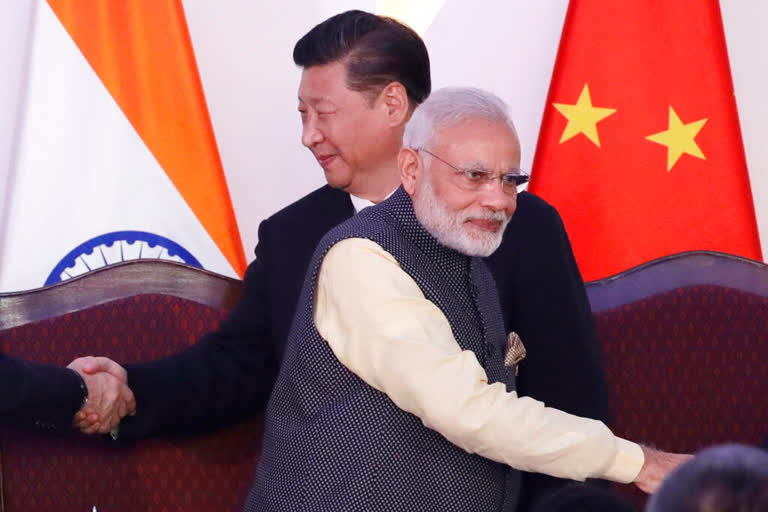Hyderabad: The border standoff across the India-China LAC (line of actual control) is now in its fourth week. According to media reports, China has mobilised some 4,000 troops and heavy equipment. The well-coordinated incursions could not have taken place without the highest-level clearance from Beijing. What happened to the bilateral understanding reinforced at the Wuhan and Mahabalipuram informal summits? Why now? Some background is in order.
China is not accustomed to the kind of global push-back that it is experiencing at present. Its standing is at an all-time low. It is seen as the birthplace of the deadliest pandemic known to mankind since the Spanish Flu of 1918-20. Foreign capital and industry are leaving its shores. The global perception of Beijing being a bully, adept at riding roughshod over fellow states, has been bolstered.
Veto-wielding Beijing prevented the UN Security Council from discussing the havoc caused by the coronavirus pandemic. But it had to yield some ground in the face of EU’s draft resolution submitted to the World Health Assembly (May 18-19) and supported by over 120 countries. President Xi Jinping was left with little choice but to address the conference with a vague promise of cooperation. He also did what China knows best, throw money at a problem, by committing $2 billion in assistance to set up healthcare facilities in Africa.
China is at daggers drawn with the United States in a contest for global leadership. Hi-tech decoupling with the US has gained momentum and economic decoupling with the rest of the world has commenced. The public mood in China is sour. The Chinese leadership is under pressure and the US Congress is contemplating a resolution to demand compensation from China running into a couple of trillion dollars, if not more. Foreign Minister Wang Yi lashed out saying - a political virus is spreading in the United States which is "using every opportunity to attack and smear China."
In such a situation, any other country would have preferred to keep a low profile and mend ties with the international community. Not China. They have renewed an aggressive posture in the South China Sea, tried to intimidate Taiwan and truncate the autonomy of Hong Kong, by adopting a new security law to curb dissent. The US secretary of state, Mike Pompeo, has declared that “facts on the ground” show Hong Kong is no longer autonomous, paving the way for possible sanctions.
Turning to the instant standoff, it is a fact that the boundary with China is not delineated. As such some 400-500 incursions do take place annually but are quickly resolved. However, of late they have been flaring into standoffs more often, the last of which, in 2017, at the Doklam plateau took 72 days to resolve. The big difference on this occasion is the timing, scale, military buildup and motivation. Currently, the standoff is happening at four locations – three around Galwan valley and the fourth, near Pangong Tso (or lake) in Ladakh.
There are multiple reasons for China to throw down the gauntlet to India. One, President XI Jinping wants to project the image of a strong leader which was affected during the Corona crisis. Two, Beijing is determined to create a China-centric world order where India is seen as a prospective obstacle. Three, China figures that India is currently burdened with the corona crisis. Four, it wishes to show that it is unfazed by global criticism. Five, it wants to signal to everyone that there could be consequences for taking a stand contrary to China’s. Six, China not only wants to test India's resolve but also that of the international community.
As such it would appear that President Xi has embarked upon a high-stakes and risky move. The Chinese language media has been highlighting the official version, dubbing India as the aggressor. During the PLA (People’s Liberation Army) plenary on 26 May, Xi Jinping called upon them to “scale up battle preparedness” without naming any country. In doing so they have narrowed their elbow room for manoeuvre. Fortunately, a number of bilateral military, diplomatic and political dialogue mechanisms are available to both sides, that are already activated. It is hoped that the issue will be resolved peacefully. Yet there is no hiding the fact that India is confronted with a major challenge.



